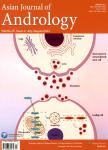Chinese nomogram to predict probability of positive initia prostate biopsy: a study in Taiwan region
预测中国男性前列腺癌切片检查阳性率的视距诺模图:基于台湾地区的研究作者机构:Department of Ophthalmology Chi-Mei Medical Center Tainan 710 Department of Optometry Chung Hwa University of Medical Technology Taina n 710 Division of UrologyDepartments of Surgery Chi-Mei Medical Center Tainan 710 Department of Nephrology Chi-Mei Medical Center Tainan 710 Department of Sport Management College of Leisure and Recreation Management Chia Nan University of Pharmacy and Science Tainan 710 Department of Food Nutrition Chung Hwa University of Medical TechnologyTainan 710 Chia-Yi Christian Hospital Chia-Yi 600 Department of Emergency Medicine Chi-Mei Medical Center Tainan 710 Department of Biotechnology Southern Taiwa n University of Science and Technology Tainan 710 Department of Envtronmental and Occupational Health Medical College National Cheng Kung University Tainan 710 Clinical Division of Occupational Medicine Institute of Occupational Health and Occupational Medicine Academy of Medical Science Jinan 25000 China Divisions of Urology Department of Surgery Chi-Mei Medical Center Liouying 736 Department of Child Care and Education Southern Taiwan University of Science and Technology Tainan 710
出 版 物:《Asian Journal of Andrology》 (亚洲男性学杂志(英文版))
年 卷 期:2013年第15卷第6期
页 面:780-784,I0008页
核心收录:
学科分类:10[医学]
主 题:biopsy Chinese nomogram prediction prostate cancer
摘 要:Several nomograms for prostate cancer detection have recently been developed. Because the incidence of prostate cancer is lower in Chinese men, nomograms based on other populations cannot be directly applied to Chinese men. We, therefore, developed a model for predicting the probability of a positive initial prostate biopsy using clinical and laboratory data from a Chinese male population. Data were collected from 893 Chinese male referrals, 697 in the derivation set and 196 in the external validation set, who underwent initial prostate biopsies as individual screening. We analyzed age, prostate volume, total prostate-specific antigen (PSA), PSA density (PSAD), digital rectal examinations (DRE) and transrectal ultrasound (TRUS) echogenicity. Logistic regression analysis estimated odds ratio, 95% confidence intervals and Pvalues. Independent predictors of a positive biopsy result included advanced age, small prostate volume, elevated total PSA, abnormal digital rectal examination, and hyperechoic or hypoechoic TRUS echogenicity. We developed a predictive nomogram for an initial positive biopsy using these variables. The area under the receiver-operating characteristic curve for the model was 88.8%, which was greater than that of the prediction based on total PSA alone (area under the receiver-operating characteristic curve 74.7%). If externally validated, the predictive probability was 0.827 and the accuracy rate was 78.1%, respectively. Incorporating clinical and laboratory data into a prebiopsy nomogram improved the prediction of prostate cancer compared with predictions based solely on the individual factors.



